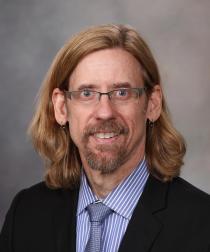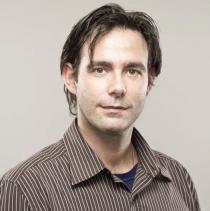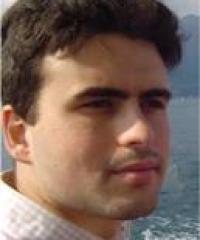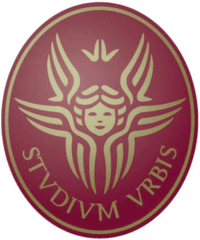Tutorials for MeMeA 2018 will be held on June 13, the last day of the conference, and are included in all full conference registrations. Please check back regularly for updated information regarding the tutorials offered at MeMeA 2018.
Tutorial: Ensuring Your Medical Device is Safe for Clinical Trials: What you Need to Know
When engineers are successful developing and prototyping new medical devices for diagnosis or treatment, there inevitably comes a time when the device needs to be trialed on a human. Whether this happens in your laboratory or in a controlled clinical environment, any device used on a human needs to be designed and confirmed to be safe. Regardless of where the device was developed there are very similar requirements governing the development process, the safety risk management activities, and the verification and validation of a new medical device in preparation for a clinical trial. Often, academic institutions are unaware of these requirements, resulting in a significant amount of rework before a device can be trialed on a human. This one-hour session will provide a summary of the best practices for the development of new and innovative medical devices in order to ensure a smooth transition to human use.
Mark Wehde, MS, is Section Head of Technology Development within the Division of Engineering (DOE) at Mayo Clinic, Rochester, MN, USA. His group specializes in biomedical technology and medical device development. Mark is very familiar with the entire process from early feasibility studies through clinical trials. Though his responsibilities include personnel management, staffing and recruitment, strategic planning, process improvement, project evaluation and prioritization, academic and industry collaborations, intellectual property, technology investigation, and project management, his love is innovation—solving new problems in new ways.
Mark is familiar with FDA, IEC, and ISO regulations and standards for medical devices including FDA 21 CFR Part 820 and ISO 13485 (quality system regulations), ISO 14971 (risk management for medical devices), and IEC 60601, IEC 61010 (medical and laboratory device safety) and IEC 62304 (medical device software). He is also the sponsor of the DOE Engineering Project Safety Subcommittee and the reprocessing and biocompatibility workgroups.
In addition, Mark is a member of the Mayo Midwest Medical Device Sterilizationand Disinfection Oversight Group, he has a faculty position in the Quality Academy, and is a facilitator in the Office of Leadership and Organizational Development. Mark has recently been selected as a juror for the Medical Design and Manufacturing 2018 Medical Design Excellence Awards. He is also a reviewer for the IEEE International Symposium of Medical Measurements and Applications (MeMeA) and was part of the MeMeA 2017 Local Committee hosting the prior conference at Mayo Clinic in Rochester, MN, USA.
Tutorial: Can contrast-enhanced imaging reveal cancer angiogenesis?
Almost one in two people has to deal with cancer and one in four people dies from it. With about 25% of cancer cases, prostate cancer is the most frequent type of cancer in men; unfortunately, the available clinical diagnostics is limited to invasive systematic biopsies.
Angiogenesis is associated with cancer growth and development, providing an important opportunity for diagnostic imaging. In particular, dynamic contrast-enhanced ultrasound (DCE-US) is a diagnostic tool that is suitable for analysis of the microvascular bed. Quantitative analysis of cancer angiogenesis is of particular interest for diagnosis and prognostic assessment of cancer aggressiveness. Recently, we successfully proposed contrast-ultrasound dispersion imaging (CUDI) for prostate cancer diagnosis, exploiting the link between intravascular dispersion of ultrasound contrast agents and angiogenic changes in the microvascular architecture. This concept has also been translated to DCE-MRI, introducing new models that account for extravascular contrast leakage.
By the methods originally proposed, independent estimation of the dispersion and velocity components was not possible due to the ambiguity between convection and dispersion. More recently, a new method was proposed that provides a separate estimation of convection and dispersion by full identification of the local dilution system. This provides additional diagnostic information, including blood velocity maps that can be used for additional statistical analysis. By use of tractography, the main stream lines of blood flow can also be reconstructed and rendered. Eventually, combination by machine learning of relevant contrast-transport features derived from DCE-US has been proven to boost even further the accuracy of prostate cancer diagnosis.
Novel quantitative molecular imaging of angiogenesis has additionally been introduced by modeling the transport kinetics of ultrasound contrast agents that are targeted to angiogenic expressions. The developed analytical models enable the assessment of the binding/unbinding kinetics of the agent, showing promise for early diagnosis of colon and prostate cancer.
In general, the proposed methods for quantitative imaging of angiogenesis are not specific to prostate cancer only, and future application to other types of cancer can also be envisaged.
Massimo Mischi received the M.Sc. degree in Electronic Engineering at La Sapienza University of Rome (Italy) in 1999. In 2004, he received the Ph.D. degree from the Eindhoven University of Technology (TU/e, the Netherlands). In 2011, he became associate professor, and since 2018 he is full professor at the Electrical Engineering Faculty of the TU/e. Since 2013, he is director of the Biomedical Diagnostics Research Lab of the TU/e (www.bmdresearch.nl), and since 2014 he coordinates the Healthcare Research program of the Electrical Engineering Faculty (TU/e). His research focuses on model-based quantitative analysis of biomedical signals and images, spanning from heart and muscle electrophysiology up to ultrasound and magnetic-resonance imaging. He was awarded with the STW VIDI Grant in 2009 and with the ERC Starting Grant in 2011 for his research on contrast-enhanced ultrasound imaging of angiogenesis for cancer diagnostics. Massimo Mischi has (co)authored over 100 journal papers and 150 conference contributions. He is Senior Member of the IEEE, Chairman of the IEEE EMBS Benelux Chapter, Secretary of the Dutch Society of Medical Ultrasound (EFSUMB Section), and board member of the ESUI (Urological Imaging Section of the European Association of Urology). He also serves as associate editor for the IEEE Transactions on Ultrasonics, Ferroelectrics, and Frequency Control and for the Journal BioMedical Engineering and Research (IRBM) published by Elsevier.
Neuromorphic artificial touch sensors for hand bionic prostheses
A neuro-robotic approach has been systematically pursued during a long-term research strand at The BioRobotics Institute of Scuola Superiore Sant’Anna in order to endow a generation of bionic hand prostheses with an artificial sense of touch. Our ambition is the restoration of natural tactile sensation and perception in upper-limb amputees.
This tutorial will introduce selected case-studies representing the milestones towards the targeted objective, requiring the exploration of an understanding-generation loop by means of a close integration between neuroscience and robotics. This pathway was pursued through three main research actions.
First, the development of tools enabling neuroscientific measurements and analyses on the human somatosensory system, such as mechatronic tactile stimulators suitable for electrophysiological recordings and for behavioral studies with psychophysical methods.
Second, the development of a biomimetic artificial touch technology that codes tactile information in a neuromorphic fashion, i.e. with sequences of spikes, and its integration in the distal phalanx of underactuated robotic hands, so to allow its experimental assessment under both passive-touch and active-touch motion control strategies and to evaluate neuroscientific hypotheses on the human somatosensory system.
Third, the porting of the developed artificial tactile sensing technology to the afferent pathways of the amputee.
Calogero Oddo has a PhD in BioRobotics from Scuola Superiore Sant’Anna (SSSA), Pisa, Italy; a MSc and BSc in Electronic Engineering from University of Pisa, 1st and 2nd level degrees in Industrial and Information Engineering from SSSA (10 positions, 334 applicants), all with honors. He is currently Tenure-Track Assistant Professor of Bioengineering, he obtained the national scientific habilitation to serve as Associate Professor, and he coordinates the Neuro-Robotic Touch Laboratory (21 research fellows) at The BioRobotics Institute of SSSA. He has over 65 conference and journal publications in integrating biorobotics, neuroscience and industrial applications, with particular interests in the study of the human sense of touch and on its artificial engineering. He has been co-PI or WP leader within EU-H2020 (Endoo), EU-FP7 (NanoBioTouch, NEBIAS) and National projects (Centauro, IMEROS, HandBot PRIN, Italy-Serbia and Italy-Sweden bilateral projects, Intelligent Factory National Cluster, Parloma Smart Cities and Social Innovation call). In 2016 he served as senior advisor of the European Commission within the FET-Flagships interim evaluation panel and he currently serves as a member of the advisory board of the EFFECT EU project. He is the recipient of the Working Capital grant with the SensAlone project, funded by Telecom Italia company (30 grants, 2133 applicants). In 2012 he was finalist in the “Georges Giralt PhD Award”, the most important European PhD award in robotics, organized by the “EUropean RObotics research Network”, and in 2009 he was finalist for the Best Student Paper Award at the IEEE BioRob Conference.







